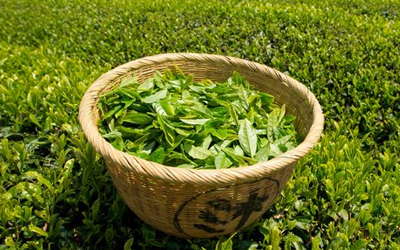
Phyto Life Sciences p ltd introduces broad varieties of customized Green tea extract with Unique Features to meet consumer’s specific requirements in Healthcare, Food & Cosmetic industries
This species is an evergreen shrub or tree growing 60-150 centimeters in height.
Leaves are simple, alternate. The full grown tea leaf is from 5-10 cm long, dark green in color, glossy on the upper surface, lanceolate or elliptical in outline, and blunt or acuminate at the apex, tapering at the base into short stalk; margin is distantly and shortly serrate, the serrations terminating in characteristics, glandular teeth that readily break off and are often absent from mature leaves. Flowers are white, fragrant, solitary or 2-4 together. Fruits are depressed capsules, 3-cornered, 3 seeded.

All chemicals listed pertain to the leaves unless otherwise specified, as the leaves are the part used. Alkaloids (Caffeine, theobromine, theophylline), tannins (catechins, especially (-) epigallocatechin, gallocatechins, gallate (EGCG) and Phenolic acids (Caffeic, ferulic).
In black tea caffeine is present to an extent of 1-5%. Also present the isomeric dimethylxanthine, theobromine and theophylline. 80% of caffeine is extracted during normal brewing. Caffeine and its metabolites do not accumulate in the body. They are demethylated, oxidized and excreted as methyuric acid. It has been found that caffeine from tea is assimilated very slowly as compared to caffeine from coffee or its aqueous solutions. Soluble polyphenols, mainly catechol tannins constitutes 10-20% w/w of black tea. Much of these are derived by oxidation of flavonols, flavandiols and theogallin during its preparation. Thearubigins constitutes a major part in black tea. Theaflavins are fiercely astringent. Caffeine enhances biosynthesis of catecholamine and polyphenols inhibit their degradation. Among the flavor substances present in combined from such alcohols as hex-3-en-1-ol, benzyl alcohol, and 2-phenyl-ethanol, as well as linallol in black tea and geraniol in green tea.
Centuries of Ayurvedic medical experience using Camellia sinensis have revealed it to have Pharmacological value as an astringent, bitter, thermogenic, antioxidents.
EGCG is a potent antioxidant. EGCG is 200 times more powerful that vitamin E in neutralizing the pro- oxidents and free radicals that attacks lipids in the brain, in vivo. It is 20 times more potent than vitamin E in reducing formation of peroxides in lard by the Active Oxygen Method, in vitro.
Used primarily for its free radical fighting capabilities; EGCG protect against digestives and respiratory.
Caffeine stimulates mental alacrity and increases discrimination ability. Relieves muscular and mental fatigue. Possesses antispasmoditic, anti-inflammatory and muscle relaxant properties. Promotes cerebration, preserves mental equilibrium and induce tranquility. Beneficial in headache, neuralgia and nervous depression. The cup that cheers, thus, gets sound biochemical basis and acts as a mood elevator. The stimulation effect of tea does not have subsequent depression or hangover.
Reduces high total and LDL- cholesterol levels, high blood pressure (suppresses angiotensin 1 converting enzyme), and reduce platelet aggregation. Tea flavonoids (catechol) posses anti- coagulant, anti- tumourigenic, capillary and blood vessels strengthening, and antibacterial properties.
Inhibiting pathogenic bacteria that cause food poisoning.
Collection of raw material in proper season from various regions of India. Authentication and Standardization of botanical species carried out respectively.
Our organization adopted USP based methods for extraction to maintain quality, safety & efficacy of our product by following GMP. For enrichment of herbal extract we optimized & monitored critical process parameters to achieve desire end product which conserve its natural aroma and taste to satisfy consumers need. Product is processed & stored under strictly hygienic production environment.
Phyto Life Science is always taking consideration of consumer’s requirement by providing them versatile products with below unique features:
Powder, Liquid and Oil soluble version also available
Store at cool and dry place
Important Note :-The information presented in this is for informational, reference and educational purposes only and should not be interpreted as a substitute for diagnosis and treatment by a health care professional. Although, the information presented about product is based on material provided by researchers and sources deemed reliable, we do not presume to give medical advice. The information presented here is the base on various Ayurveda & other book references and some market literatures and books and published papers. Anyone wishing to use this information should share it with his or her health care provider before embarking on any therapeutic program. It is your responsibility to discuss any alternative or natural remedy with your health care provider before use.